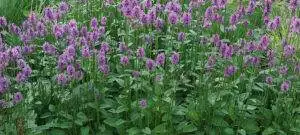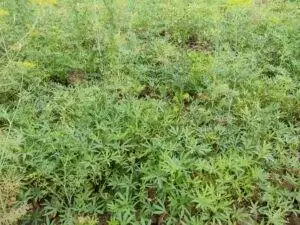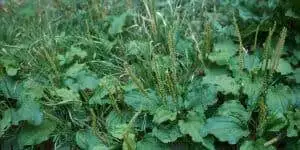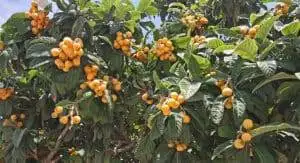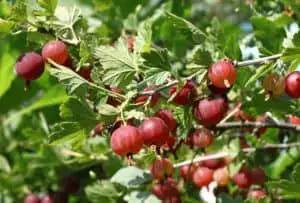Plants for Wildlife (Habitat and Food)
Certain plants are particularly beneficial in providing the wildlife around us with a home and the resources they need. As food sources, places of shelter, or habitation for a range of different creatures, the plants in this category are well known to help us create wildlife-friendly spaces, with rich biodiversity that generates as many positive interactions as possible within an ecosystem.
Prioritizing plants for wildlife benefit is a core ideology within permaculture design. And fortunately, there is a growing interest in wildlife-friendly gardening, and in agroecological approaches and rewilding that cater not only to humanity through food-producing systems and ecosystem restoration, but also to all the life that shares our planet.
In broader design decisions and in plant choices, keeping wildlife in mind is central to the core permaculture ethic of care for our planet (and all of its residents). But in order to understand why exactly a wildlife-friendly focus is so important, let's explore this issue in a little more depth.
Why Planting for Wildlife is So Important
When we think about why planting for wildlife is so important, we need to look at it from a range of different angles.
We need to look at the issue without such a human-centric point of view, valuing wildlife around us in its own right.
We also need to appreciate the interconnectedness of life on this planet – recognising that humanity is just one element within much wider and broader systems.
We need to understand that everything gardens, and the help we receive from wildlife to meet our own needs.
And we need to look at why we have a duty to tackle biodiversity losses, a moral as well as practical imperative to do so.
The Intrinsic Value of All Life on Our Planet
All too often, when we look at the world and the creatures around us, we view it through an anthropocentric lens. For many, especially in developed nations, a disconnect has arisen between human society and the natural world. There is a tendency to see ourselves as separate from and higher than other life.
But intrinsically, in sustainability, we need to recognise that we are no elevated species – but simply one of many. And that our own value is no higher than that of other animal and plant species.
Value is an important and interesting question. All too often, in the modern world, we are used to talking about financial value. But value is something that goes far deeper than modern financial systems.
We need to value, and recognise the innate value in, the natural world around us if we stand any chance of developing systems and ways of life that respect all life on our planet. All lives are precious – not just human ones.
This is one of the reasons why it is so important for us to plant for wildlife, and not just thinking of our own individual needs.
Everything is Connected – Wildlife's Value to Humanity
There is a great danger inherent in the human tendency to see ourselves as separate and greater than, over and above the disrespect this shows to the precious life around us. Because of course, we are part of systems far greater than ourselves.
Caring for people on our planet means recognising that we rely on the other life around us in so many ways, and are interconnected in ways we sometimes forget.
A complex web of plant and animal life sustains life on our planet. And wildlife is not only valuable in its own right, but also essential to our own survival on Earth.
When species numbers decline, or a species is lost, this has complex ramifications across broad ecosystems and bioregions.
And those ramifications are not just simply ecological, but can also impact our own lives in numerous profound ways – affecting our ability to provide for our own most basic physiological and mental needs short or longer term.
Wildlife, simply put, keeps global cycles turning and is vital in making sure that the global systems on which we depend work as they should.
So restoring functioning ecosystems to sustain a complex web of life is crucial not only for those creatures themselves, but for our own survival.
Wildlife's Functions in a Garden or on a Farm
On a smaller scale, within any garden, farm or food producing system, we often overlook the fact that we are not the only ones working. We never garden alone. Instead, whether we are aware of it or not, we toil alongside numerous other creatures above and below the soil.
The wildlife with which we share our space not only lives alongside us, but also provides a range of ecosystem services that are directly beneficial to us.
As pollinators, as pest controllers, as decomposers, as fertilizers, as pruners, as landscapers, and more, numerous creatures form an army of helpers to us in any horticultural or agricultural space.
Like us, other creatures shape the world around them as ecosystem engineers. And when we work with nature rather than fighting it, we see that wildlife functions to aid us in all our efforts.
Attracting wildlife, therefore, is the most important step in creating functioning, organic growing systems that provide food, and for our other basic needs.
Tackling Biodiversity Loss
Another major reason why it is so important to prioritize plants for wildlife benefit as well as for our own benefit is that it helps us to become part of the solution to one of the biggest crises of our times, rather than part of the problem.
Often, we may focus our thoughts on the climate crisis. But the linked and interwoven crisis of biodiversity loss is another major crisis of our times.
Mass extinction, a crisis at least in part of our own making, is ongoing at an alarming rate. Biodiversity is decreasing on a number of fronts and individual species and ecosystems are under immense threat due to climate change, habitat losses, ecosystem degradation and pollution of various kinds...
Tackling biodiversity loss is not only essential for our survival on this planet – it is a moral imperative. We have a duty to redress the issue – repair the damage we have done and are doing.
We need to think about reciprocity, how we can and should give back. We need to consider what we owe not only to other people, but to all the wildlife with whom we share our planet home.
Boosting Biodiversity in Permaculture Design
In permaculture, we understand that boosting biodiversity is an important goal, and an integral ethos in any design.
Boosting biodiversity is not only about introducing a variety of plant species. It also involves thinking carefully about welcoming in wildlife, and valuing the interconnections between plant and animal species in our work.
Biodiversity is not simply about increasing the number of species present. Rather, it is about increasing the number of beneficial interactions within the system as a whole.
The greater the biodiversity, the higher the number of beneficial interactions. And the more beneficial interactions, the more stable and resilient a system will be.
In other words, the more we work on integrating plants and animals, and creating planting schemes and other elements for wildlife, the more likely our efforts are to truly stand the test of time.
Designing From Patterns To Details
In permaculture design, observation is key. And we work from the broader patterns of an environment and situation before we hone in on the finer details.
Working for wildlife benefit begins long before we choose specific plants. In the design phase of any project, looking at sectors and flow means not only looking at elemental forces of sunlight, wind and water, but also at the patterns of wildlife within, into and out of the system.
For example, we can better learn how to cater for wildlife by understanding migration routes and patterns of movement for the species that we are likely to encounter in a given area. And use these things too to inform our designs.
The Important Role of Native Plants in a Wildlife-Friendly Planting Scheme
The design process helps us see very clearly that there is no one-size-fits-all approach for a wildlife friendly garden, or other wildlife-friendly planting scheme.
Understanding the interaction between native plants and native wildlife can help us see why it can be beneficial to include a high level of native planting within a design.
Native plants have evolved alongside native wildlife species, and often, adaptations have occurred that mean that native plants alone can meet the needs of local wildlife – or, at the least – are particularly well-equipped to do so.
So when we are choosing plants for the benefit of wildlife, native plants should always be at the tops of our lists.
Functioning Ecosystems:
Perhaps the most important thing to remember, however, when creating wildlife-friendly designs and implementing them, is that it is not individual plants that are most vital in sustaining biodiversity. Rather, it is functioning ecosystems.
Ecosystems, and the numerous elements that they contain, including the soil and its web of life, as well as the plants included within it, are more important than the specific plants we include for the benefit of wildlife in a given area.
Thinking more holistically about creating habitats for wildlife, rather than just planting individual plants, is crucial if we really want to boost biodiversity and do the right thing for wildlife in our areas.
Whether we are creating habitat in a garden, bringing wildlife back to urban environments, or planting for wildlife at landscape scale, catering for wildlife and rewilding means embracing holistic design principles and creating layered and complex planting schemes that sustain as much life as possible.
Key Habitats For Wildlife Benefit
No matter what the scale, creating functioning ecosystems provides varied habitat for a broad range of native wildlife. Creating wildlife-friendly spaces means embracing natural ecological diversity, and working through our planting to create specific habitats suited to where we are.
Native Forest and Woodland
Protecting and preserving native old-growth or established woodlands and forests where we live is of course crucial. But reforestation/ afforestation with native species, even on a small scale, can make a big difference to native wildlife. Even a small forest or woodland system can support and sustain a huge variety of life as well as, in the right location, bringing numerous other benefits.
Agroforestry & Forest Garden Systems
Though not truly 'natural' systems, overhauling agriculture and home food production means embracing tree-based ecosystems. Agroforestry and forest garden systems can also support a huge variety of wildlife – boosting biodiversity while also providing abundant yields.
Hedgerows & Shrublands
Shrubs are often overlooked as plants valuable in wildlife-friendly design, beyond their use in layered planting schemes like forest gardens. But hedgerows and shrublands can also be incredibly rich in biodiversity and bring immense benefits as wildlife corridors and havens within a landscape.
Wetlands, Waterways and Ponds
Wetlands are the most biodiverse ecosystems on earth. Preserving existing wetland ecosystems is crucial to halting biodiversity losses and welcoming wildlife. And also, within many designs, introducing water in some way to the environment is one of the very best things we can do for the wildlife in an area. Of course, in effective water features and wetlands, and other water-related features like rain gardens, planting with the right, native species is also key.
Drought-Tolerant Planting Schemes
Rain gardens and other water management features/ planting schemes can be crucial in creating oases for wildlife – especially in arid areas. Xeriscaping, or drought-tolerant native planting schemes can also be crucial in creating a wildlife-friendly space.
Prairies and Meadows
Prairies and meadows are other important habitats for wildlife. And whether we are talking about broader-scale restoration of tall-grass or short-grass prairies or native meadows, or replacing a monoculture grass lawn with a more wildlife-friendly scheme, forbs or wildflowers, legumes and grasses are important plants to consider in creating these habitats.
Flowering Perennials & Self-Seeding Annuals
No matter where they are created, flower-rich planting schemes are crucial – for pollinators in particular. From field margins in an agroecological system, to ornamental beds in the smallest garden, including plants that are in bloom over as much of the year as possible is very important for wildlife benefit.
Polycultures & Companion Planting
In any food-producing system, avoiding monoculture planting and instead aiming for diverse and ecologically functioning habitat is key. Polyculture creation and companion planting are key considerations for anyone looking to create systems to meet human needs that also bring wildlife benefit.
Of course, there is a lot to learn about choosing appropriate plant species for a given location and situation, and creating ecologically functioning ecosystems that become habitat for wildlife. But this is a challenge we can and must rise to if we are to create the future we all wish to see.


